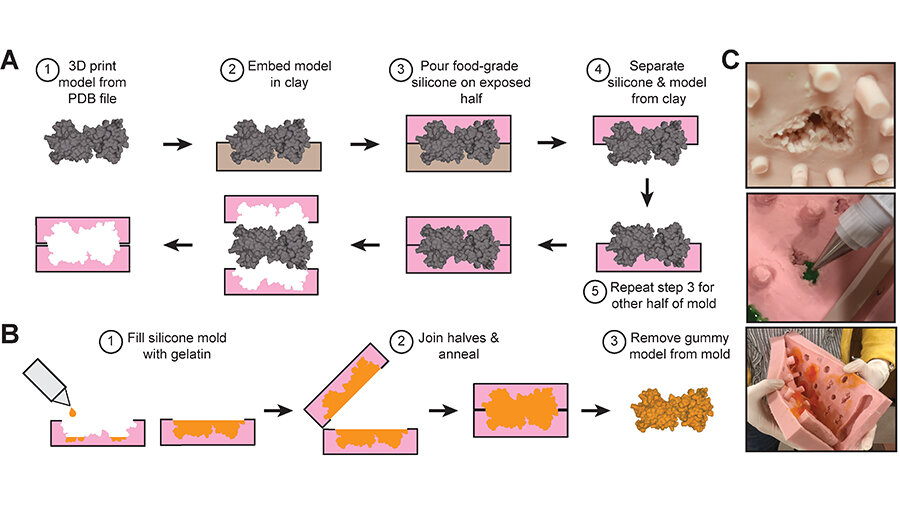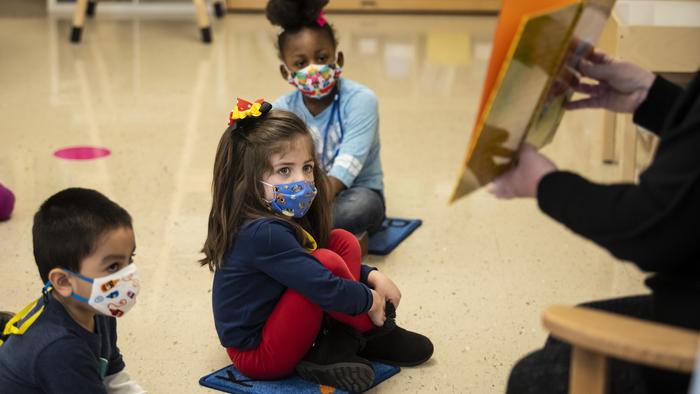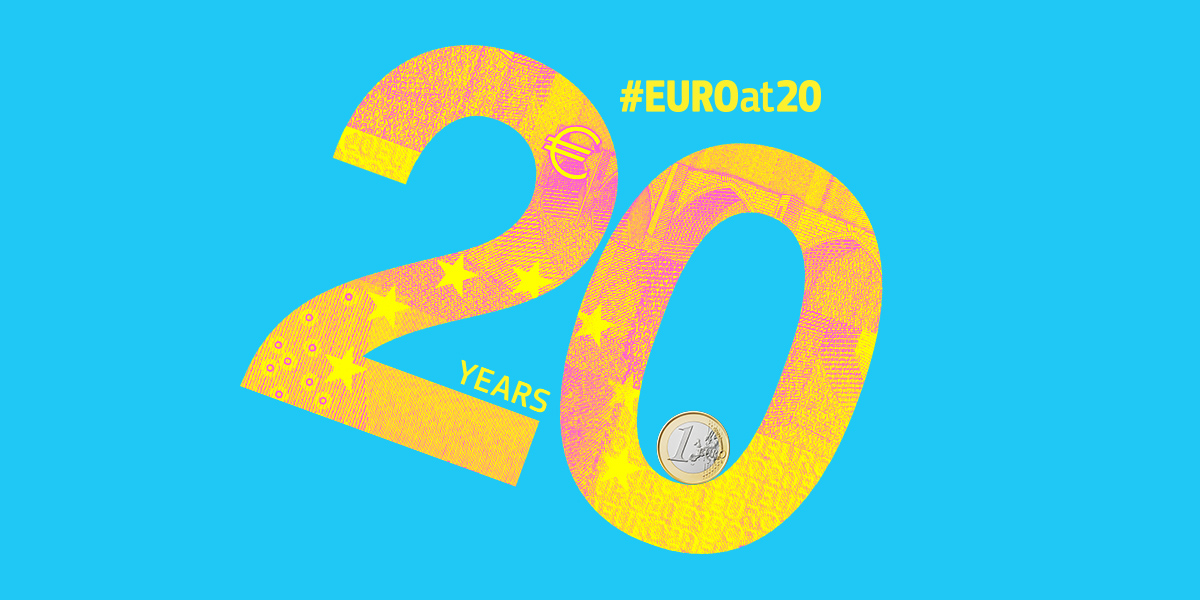
Study uses candy-like models to make STEM accessible to visually impaired students
May 28, 2021
by Baylor University
About 36 million people have blindness including 1 million children. Additionally, 216 million people experience moderate to severe visual impairment. However, STEM (science, technology, engineering and math) education maintains a reliance on three-dimensional imagery for education. Most of this imagery is inaccessible to students with blindness. A breakthrough study by Bryan Shaw, Ph.D., professor of chemistry and biochemistry at Baylor University, aims to make science more accessible to people who are blind or visually impaired through small, candy-like models.
The Baylor-led study, published May 28 in the journal Science Advances, uses millimeter-scale gelatin models—similar to gummy bears—to improve visualization of protein molecules using oral stereognosis, or visualization of 3D shapes via the tongue and lips. The goal of the study was to create smaller, more practical tactile models of 3D imagery depicting protein molecules. The protein molecules were selected because their structures are some of the most numerous, complex and high-resolution 3D images presented throughout STEM education.






















